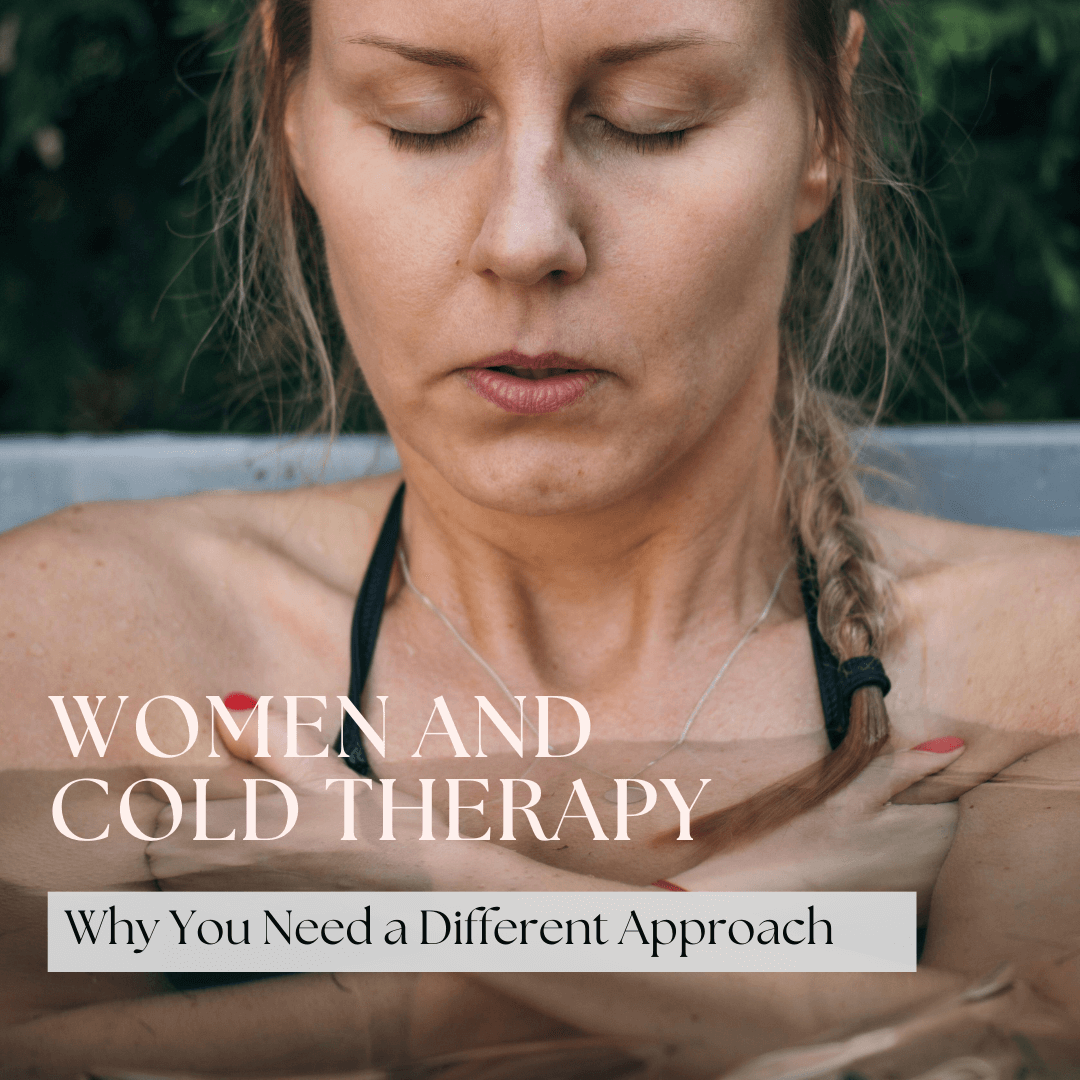Women and Cold Therapy: Why You Need a Different Approach
June 25, 2025

You’ve probably seen the hype—everyone’s plunging into ice baths, claiming instant fat loss, mental clarity, and reduced inflammation. But if you’re a woman and find yourself dreading the cold or feeling worse afterward… you’re not imagining it.
Women respond very differently to cold therapy than men. The stress is real—and so are the benefits if it’s done right.
In this post, we’ll explore why women need a unique approach, how to get started safely, and the powerful ways thermal biohacking can support hormone balance, longevity, and resilience.
1. Why Cold Affects Women Differently
Let’s clear the air: It’s not that women are “weaker” when it comes to cold—it’s that our biology is built differently.
- Higher sensitivity to stress: Cold exposure activates the sympathetic nervous system. In women, this can more easily spike cortisol, our primary stress hormone.
- Lower levels of brown fat: Brown fat is metabolically active and helps generate heat. Men tend to have more of it, which means they acclimate faster and reap fat-burning benefits more quickly.
- Hormonal fluctuations: Estrogen and progesterone affect thermoregulation and stress response—meaning where you are in your cycle (or in menopause) matters.
2. The Risks of Diving In Too Fast
Jumping into a freezing cold plunge might be trendy, but for women, it can backfire:
- Increase in anxiety or fatigue
- Disruption in hormonal balance
- Reduced workout recovery if done too soon post-exercise
- Elevation in stress hormones, which can inhibit fat loss and sleep
3. The Right Way to Start Cold Therapy as a Woman
Here’s how to ease into cold therapy without stressing your system:
✅ Step 1: Start Small
- Try a facial dunk: 30 seconds in ice water to stimulate the vagus nerve
- Follow with 30–60 seconds of cold water at the end of your hot shower
✅ Step 2: Build Up Gradually
- Move into lower body cold baths (ice + water to thighs only)
- Eventually work up to full-body immersion 2–3x per week
✅ Step 3: Breathe Through It
- Use breathwork to calm your nervous system
- Try long exhales to activate parasympathetic (rest-and-digest) mode
4. When Not to Cold Plunge
There are certain times when cold exposure can do more harm than good:
- Immediately after strength training: It can blunt muscle growth and adaptation
- During high-stress phases or poor sleep cycles
- When sick or during immune challenges
Instead, do cold plunges on non-training days or at least 4–6 hours after workouts.
5. The Benefits—When Done Right
With the proper protocol, cold therapy can help women:
- Improve mood and reduce symptoms of depression/anxiety
- Support immune health
- Build resilience to temperature swings (especially important for menopause)
- Stimulate circulation and fat metabolism (with consistency)
6. Tools & Supplements to Support the Process
To enhance your cold therapy experience:
- Magnesium Glycinate – supports nervous system regulation
- Liposomal NAD+ – for energy and stress resilience
- Adaptogens (like ashwagandha or rhodiola) – for balancing cortisol
- Primal Complete Lean Protein – for post-plunge muscle support
👉 Shop my recommended recovery supplements here. Use code LOUNGE10 for 10% off.
Conclusion: Biohack with Intention
Cold therapy isn’t just about toughness—it’s about timing, strategy, and listening to your body. Women can absolutely benefit from cold therapy—but only when it’s done with hormonal intelligence.
Start slow. Track how you feel. And remember, the best biohacks work with your biology, not against it.
